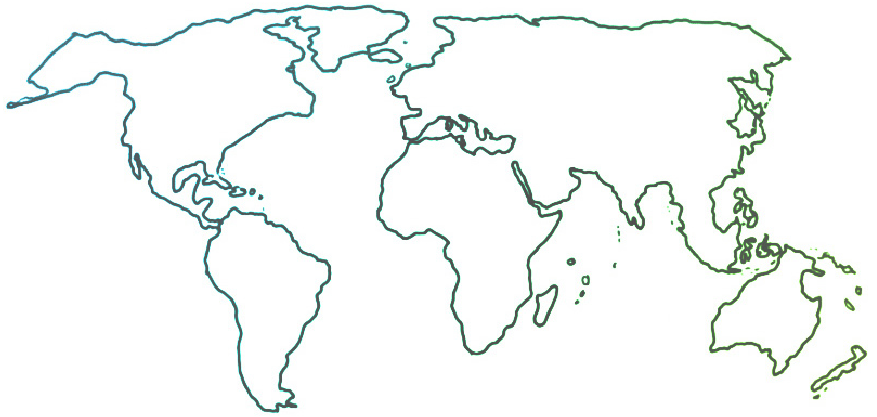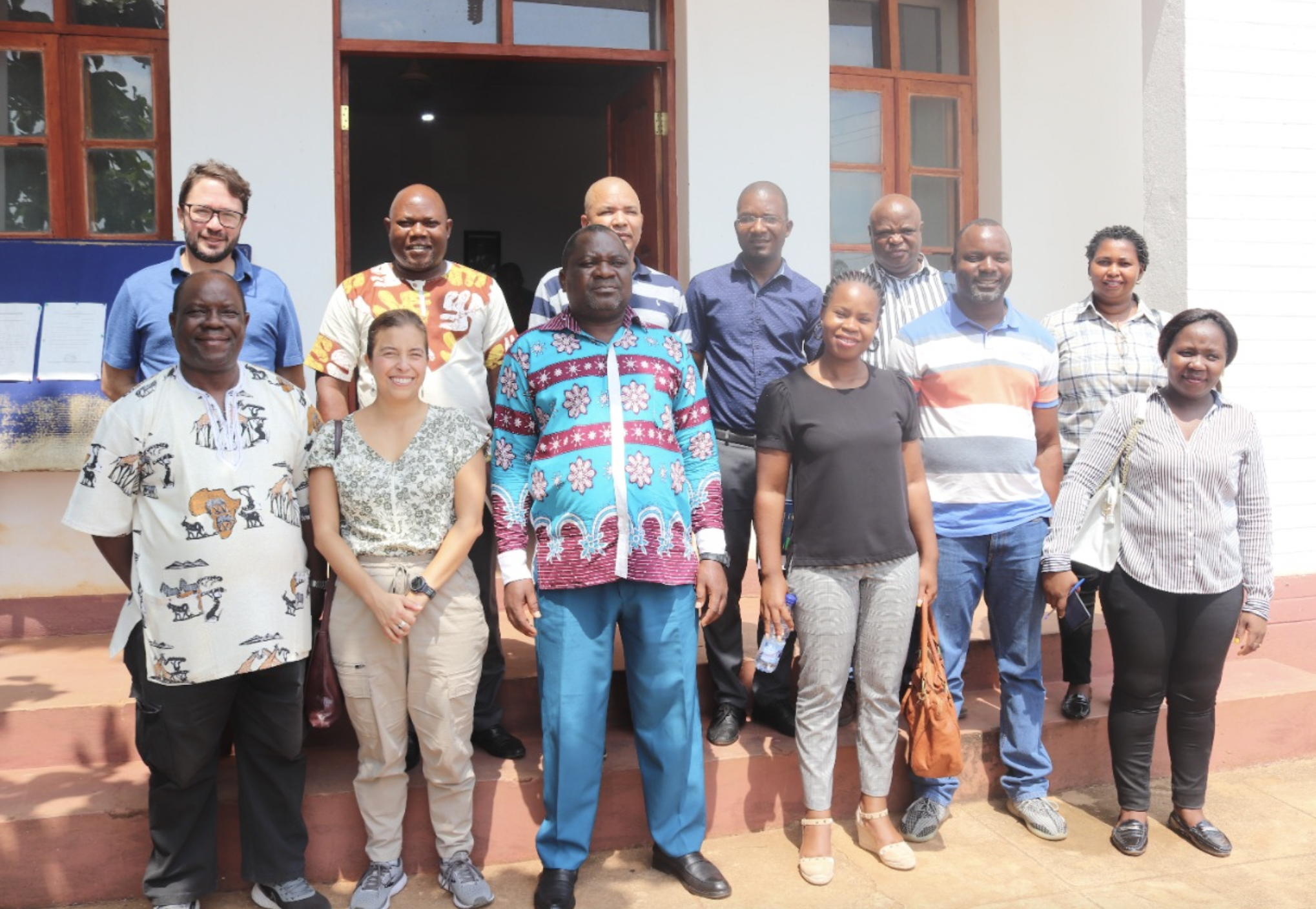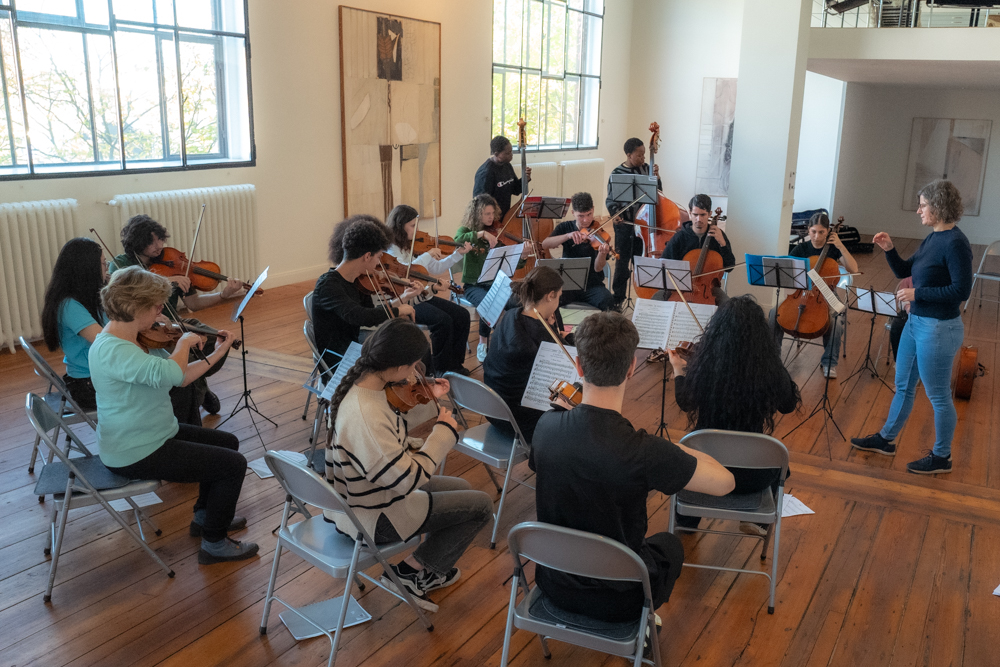
Measuring Your Program’s Results: A Practical Framework for Insight

The author (front row, second from left) with USAID colleagues in Nampula, Mozambique.
Ask any director of a music for social impact program about the program’s mission and goals, and you will receive an impassioned response about helping children, teaching music, inspiring minds, saving lives, building community, and developing social-emotional skills. There is clarity in what we all aim to achieve, built on a vision of happy students and families, beautiful music coming from every corner of a school, and meaningful stories of positively impacting children’s lives. Our vision includes accolades from school leaders or even government officials and others who are inspired by this work.
But how do we know whether we’re actually achieving these goals?
Through our experiences, we gather a wealth of qualitative data that reinforces our belief that we’re achieving positive results. Qualitative data is descriptive; it is information that can be observed but not measured. It’s different from quantitative data—information about numbers such as grades, hours of attendance, and results from surveys made up of multiple-choice questions.
Collecting both forms of data can be time-consuming and can require resources and knowledge that many programs do not immediately possess. But having some sense of this data is vitally important for what it can reveal to us about our programs, and for ensuring quality and sustainability.

A helpful tool for monitoring and evaluation is a Results Framework, a type of guide for a program’s objectives, interventions, and desired results. It’s similar to a Theory of Change, but it gets more into the details of how we measure results to discern if we are achieving our objectives. Results Frameworks were first developed by the United States Agency for International Development (USAID) in the 1990s to track and measure progress toward project goals and objectives. In Mozambique and Ghana, during the past five years, my USAID colleagues and I have used Results Frameworks with great effectiveness.
A Results Framework can be simple or complex, depending on what is most important to the organization. When done correctly, it is a beautiful resource that allows us to tell an evidence-based story about our work. And it can highlight problems when what we’re doing is not leading to our desired objectives.
As an example, let’s consider a hypothetical program outside of music: an early-grade reading program. Designing a Results Framework would start by determining our overarching long-term objective, i.e.: What is the most ambitious result this program can measurably achieve? Here’s a possible answer:
Long-term Objective: Improve early grade reading outcomes for children in target primary schools by strengthening instruction, learning materials, and system support. (Note: Make sure your long-term objective is specific, achievable, and measurable.)
Then, we would figure out three to four Intermediate Objectives that will feed into the long-term objective. Intermediate objectives are sometimes viewed as outputs/outcomes. Here are some examples:
Intermediate Objectives:
- Enhanced Teacher Capacity: Improve the instructional skills of early grade teachers through targeted training, coaching, and ongoing professional development.
- Improved Access to Quality Reading Materials: Increase availability of age-appropriate reading materials in classrooms.
- Increased Parental Engagement: Promote family and community support for reading through awareness campaigns, reading activities, and school-community partnerships.
The next step is to take each intermediate objective and specify two to three Intermediate Results: what are some particular things we would need to accomplish in order to achieve that intermediate objective? The hard work here is to become even more specific, by asking: What are the discrete parts of this objective? For Intermediate Objective 1, above, you might specify these “Intermediate Results”:
- Increased access to quality, curriculum-aligned teacher training
- Improved teacher knowledge and instructional practice in early grade reading
- Strengthened school-based support and coaching structures
Finally, you need to answer the all-important question: “How will we know if we have achieved these results?” What is our evidence of achievement? In a Results Framework, these are called “Illustrative Indicators.” Here’s an example of two Illustrative Indicators for Intermediate Result 1.1 in the above list, the one about teacher capacity:
- Percentage of early-grade teachers who complete foundational literacy training
- Percentage of teachers demonstrating improved use of evidence-based reading strategies
Once you have completed this step for each Intermediate Objective and corresponding Intermediate Results, you will have created your own unique Results Framework for your program!
Does this sound like a lot of work—maybe more work than you have time to do? You may be asking: “Why go through the process of creating a Results Framework, when we know in our souls that our programs leading to meaningful music-making, making a difference, and changing lives?”

Yes, creating and using a Results Framework involves time and thought. But I can assure you that it can mean a transformative difference for your program. Over the past five years, I have used Results Frameworks with USAID colleagues and local partners to ensure the effectiveness of education programs from Colombia to Mozambique.
If you’re interested in knowing more, or trying it out, here’s a link to a step-by-step guide I’ve put together. It will lead you through every step in the process.
Once you’ve created your Framework, you’ll be able to understand your key tasks and measure your successes in ways you haven’t been able to before. It can help you plan activities, decide what areas to focus on, and address targeted problems. It can help build consensus and harmony, as every member of the team, plus community leaders, school partners, and families, can understand what the program’s objectives are and how they can contribute. Performance data can help leaders make informed adjustments—to curriculum, program design, staff training, or community engagement—to better support long-term outcomes. Finally, Results Frameworks generate insights that support continuous learning and improvement, mirroring the growth mindset we hope to cultivate in our students.
Ultimately, having a clear Results Framework signals credibility and excellence to funders, partners, and stakeholders. It shows that your program is more than just an enriching activity; it is a purposeful effort to drive measurable change. If we want our programs to be sustainably embedded in communities and systems, we need the kind of clarity and accountability that Results Frameworks make possible.
Related Content
All Regions, Collaborations, Community Building, Europe, Events/Performances, Gather Together, News and Resources, Sweden
Side by Side Applications To Open January 7
longy-admin
All Regions, Collaborations, Community Building, Events/Performances, Gather Together, News and Resources, North America, Strings
Young Musicians Celebrate Sephardic-Latino Connections
longy-admin
Collaborations, Community Building, England, Europe, Featured, Gather Together, Teaching & Learning

Arts Communities Drive Manchester Forward
longy-admin

Collaborations, Community Building, Europe, Featured, Gather Together, Germany, Strings, Teaching & Learning

From an Empty Airport to Downtown Berlin, a Music Program Still Soars
longy-admin


